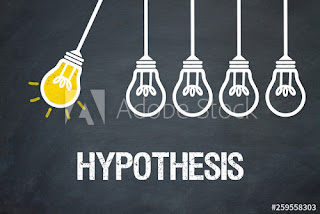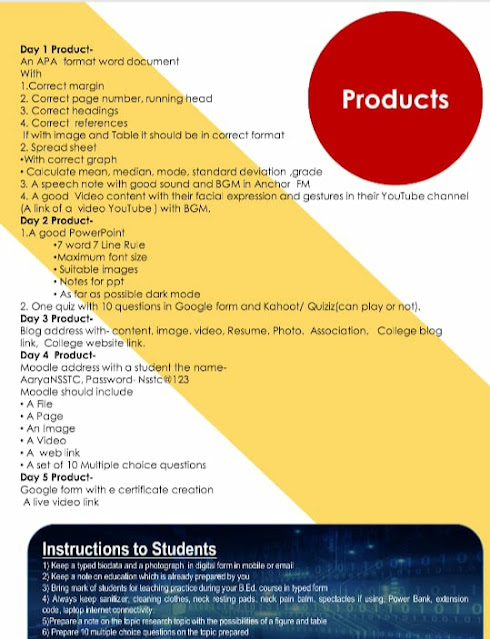FUNCTIONS OF HYPOTHESIS
FUNCTIONS OF RESEARCH HYPOTHESIS
What is hypothesis?
Hypothesis is an assumption that is made on the basis
of some evidence. This is the initial point of any investigation that
translates the research questions into a prediction. It includes components
like variables, population and the relation between the variables. A research
hypothesis is a hypothesis that is used to test the relationship between two or
more variables
Following are the characteristics of hypothesis:
· The
hypothesis should be clear and precise to consider it to be reliable.
· If
the hypothesis is a relational hypothesis, then it should be stating the
relationship between variables.
· The
hypothesis must be specific and should have scope for conducting more tests.
· The
way of explanation of the hypothesis must be very simple and it should also be
understood that the simplicity of the hypothesis is not related to its
significance.
Sources of Hypothesis
Following are the sources of
hypothesis:
The resemblance between the
phenomenon.
Observations from past studies,
present-day experiences and from the competitors.
Scientific theories.
General patterns that influence the
thinking process of people.
Types of Hypothesis
There are six forms of hypothesis and
they are:
Simple hypothesis
Complex hypothesis
Directional hypothesis
Non-directional hypothesis
Null hypothesis
Associative and casual hypothesis
Simple Hypothesis
It shows a relationship between one
dependent variable and a single independent variable. For example – If you eat
more vegetables, you will lose weight faster. Here, eating more vegetables is
an independent variable, while losing weight is the dependent variable.
Complex Hypothesis
It shows the relationship between two
or more dependent variables and two or more independent variables. Eating more
vegetables and fruits leads to weight loss, glowing skin, reduces the risk of
many diseases such as heart disease, high blood pressure and some cancers.
Directional Hypothesis
It shows how a researcher is
intellectual and committed to a particular outcome. The relationship between
the variables can also predict its nature. For example- children aged four
years eating proper food over a five-year period are having higher IQ levels
than children not having a proper meal. This shows the effect and direction of
effect.
Non-directional Hypothesis
It is used when there is no theory
involved. It is a statement that a relationship exists between two variables,
without predicting the exact nature (direction) of the relationship.
Null Hypothesis
It provides the statement which is
contrary to the hypothesis. It’s a negative statement, and there is no
relationship between independent and dependent variables. The symbol is denoted
by “HO”.
Associative and Causal Hypothesis
Associative hypothesis occurs when
there is a change in one variable resulting in a change in the other variable.
Whereas, causal hypothesis proposes a cause and effect interaction between two
or more variables.
Functions of Hypothesis
Following are the functions performed by the
hypothesis:
· Hypothesis
helps in making an observation and experiments possible.
· It
becomes the start point for the investigation.
· Hypothesis
helps in verifying the observations.
· It
helps in directing the inquiries in the right directions.
How will Hypothesis help in Scientific
Method?
Researchers use hypothesis to put down their thoughts
directing how the experiment would take place. Following are the steps that are
involved in the scientific method:
Formation of question
Doing background research
Creation of hypothesis
Designing an experiment
Collection of data
Result analysis
Summarising the experiment
Communicating the results
References
Byjus(2021). https://byjus.com/physics/hypothesis/#:~:text=Functions%20of%20Hypothesis,-Following%20are%20the&text=Hypothesis%20helps%20in%20making%20an,helps%20in%20verifying%20the%20observations.
Britannicca Encyclopaedia(2021).
FOR THE VIDEO CONTENT, CLICK HERE
SELF EVALUATION TOOL IS PROVIDED BELOW.STUDENTS PLEASE CHECK IN



Comments
Post a Comment